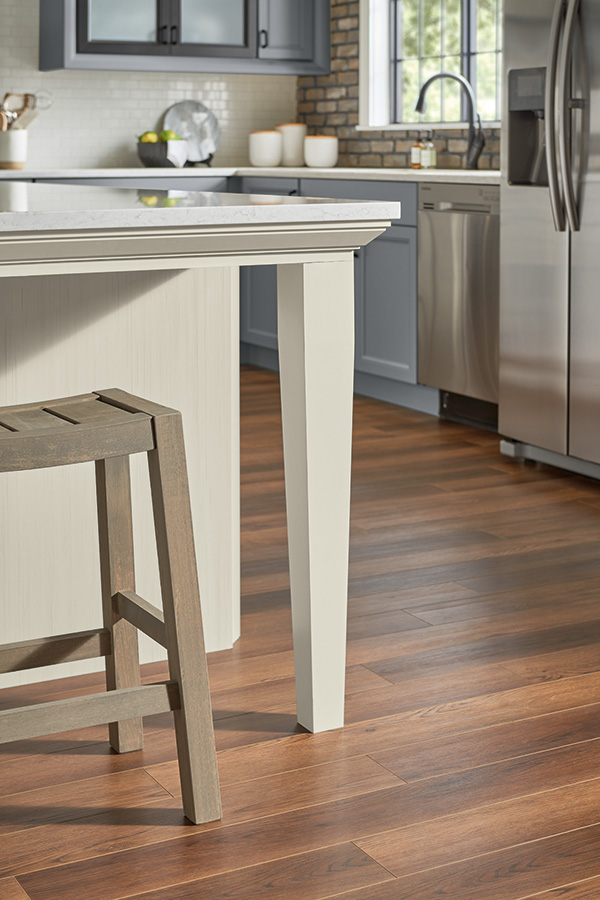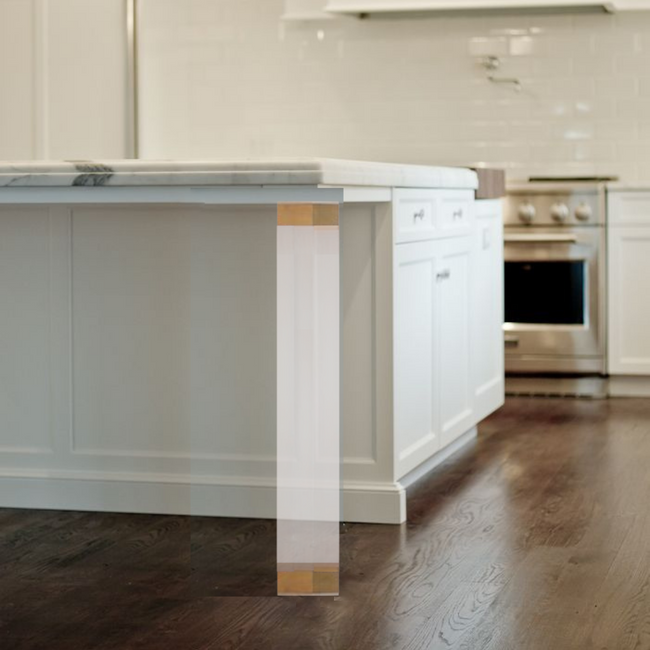Checking Out the Important Features of a Cooking Area Island Leg for Your Culinary Area
The kitchen area island acts as a main center in any culinary room, and the option of leg design is pivotal in boosting both its performance and visual allure. Comprehending the important functions of kitchen island legs-- consisting of product choices, design styles, and stability variables-- can significantly influence the total experience within the cooking area. As we check out these elements, we will certainly reveal how thoughtful modification and accessories can boost your kitchen area island from a plain utility to a striking centerpiece. What certain considerations should be prioritized to attain this balance?
Importance of Cooking Area Island Legs
Kitchen area island legs play a critical function in both the capability and aesthetic appeals of a kitchen area room. They not only sustain the weight of the island but also enhance the total style, contributing to the kitchen area's aesthetic charm. The option of legs can dictate the design of the kitchen area, be it modern, traditional, or rustic.
Functionally, robust and effectively made legs make sure security, enabling the safe use the island for different jobs such as food preparation, eating, or amusing. Strong legs stop wobbling and changing, offering a reputable surface area for everyday tasks.
Moreover, the elevation and positioning of the legs can affect the comfort degree for those seated at the island. A well-considered height can accommodate bar stools or chairs, promoting an inviting setting for celebrations.
In addition to these useful considerations, kitchen area island legs can work as a prime focus in the space (kitchen island leg). Decorative or distinctly made legs can elevate the style aesthetic, making the island a focal point. Hence, selecting the ideal cooking area island legs is crucial for balancing type and feature in any type of culinary room
Product Options for Legs
Picking the appropriate material for cooking area island legs significantly affects both sturdiness and design. Typical product alternatives consist of stone, steel, and wood, each offering distinct benefits.
Wood is a popular selection because of its heat and convenience. It can be quickly tailored to match different decor designs, from rustic to contemporary. Woods like oak and maple supply outstanding toughness and durability, while softer timbers can be a lot more vulnerable to tear and wear.
Steel legs are favored for their smooth, modern visual. kitchen island leg. Stainless steel and aluminum are not just robust yet likewise immune to corrosion and rust, making them ideal for cooking area environments. They can develop a commercial appearance and are usually offered in numerous coatings to enhance other cooking area elements
Stone legs, such as granite or marble, include an element of high-end and security. While larger than other materials, they use extraordinary resilience and can stand up to substantial weight. They may need extra assistance to ensure proper balance.
Inevitably, the option of material need to straighten with both practical demands and the total style vision of the cooking area area, guaranteeing that the island legs enhance both energy and visual appeals.
Style Designs to Take Into Consideration
What design styles should be taken into consideration when selecting legs for a kitchen island? The selection of leg style significantly affects the overall visual of your culinary area. For a contemporary cooking area, minimalistic and sleek leg layouts, such as stainless steel or geometric forms, can improve the modern appeal, providing a tidy and clean look.
On the other hand, standard kitchens take advantage of timeless styles such as turned or carved wooden legs, which include warmth and personality. These options often include complex details that enhance vintage home furnishings. For a rustic ambiance, take into consideration legs made from recovered timber or wrought iron, which bring an organic, earthy top quality to the room.
If you lean towards an industrial motif, robust steel legs with a distressed surface may be perfect, supplying an edgy yet innovative touch. Additionally, farmhouse design kitchen areas can include chunky legs that evoke a sense of durability and homeliness.

Height and Security Factors
The elevation and security of a kitchen area island are essential aspects that directly influence its functionality and individual experience. An excellent kitchen island leg must give sufficient height to suit a selection of tasks, from cooking to informal dining. Usually, cooking area islands separate 36 to 42 inches tall, aligning with common counter and bar elevations. This range guarantees convenience for customers while executing various activities, therefore enhancing the overall functionality of the room.
Stability is equally important, specifically as kitchen area islands typically serve as focal factors in cooking environments. The leg's add-on to the island's base need to be safe, guaranteeing longevity and strength against the wear and tear of daily usage.
Personalization and Accessories
Modification options and devices for kitchen area island legs can significantly boost both the aesthetic allure and performance of the area. Property owners can pick from a range of materials, consisting of stone, timber, and metal, enabling seamless assimilation with existing kitchen area decor. The option of coating-- be it a natural stain, paint, or powder covering-- more personalizes the appearance, ensuring that the island enhances the overall design style.
In enhancement to material and finish, house owners might also check out the unification of accessories such as ornamental braces, adjustable feet, or integrated shelving. Braces can offer additional support while adding to a contemporary or rustic visual. Adjustable feet are particularly valuable for uneven flooring, guaranteeing the island stays secure and degree, which is essential for both safety and security and usability.

Conclusion
To conclude, cooking area island legs serve an essential role in offering security and boosting the overall aesthetic of the culinary area. The choice of products and layout styles contributes to both functionality and visual charm, while factors to consider of elevation and security ensure have a peek at this site useful use. Personalization alternatives and devices can boost the cooking area island, making it a distinctive focal point within the home. Therefore, cautious factor to consider of these attributes is important for an efficient cooking area design.
The cooking area island offers as a main center in see page any kind of cooking space, and the choice of leg style is essential in boosting both its functionality and aesthetic allure. Understanding the important functions of kitchen area island legs-- consisting of material choices, style styles, and security aspects-- can dramatically influence the total experience within the cooking area.Cooking area island legs play a crucial role in both the functionality and appearances of a kitchen area area.What style styles should be thought about when selecting legs for a kitchen area island?In final thought, kitchen area island legs serve a critical duty in supplying stability and enhancing the overall visual of the culinary room.
Comments on “Trendy Kitchen Island Leg Ideas to Elevate Your Kitchen Decor”